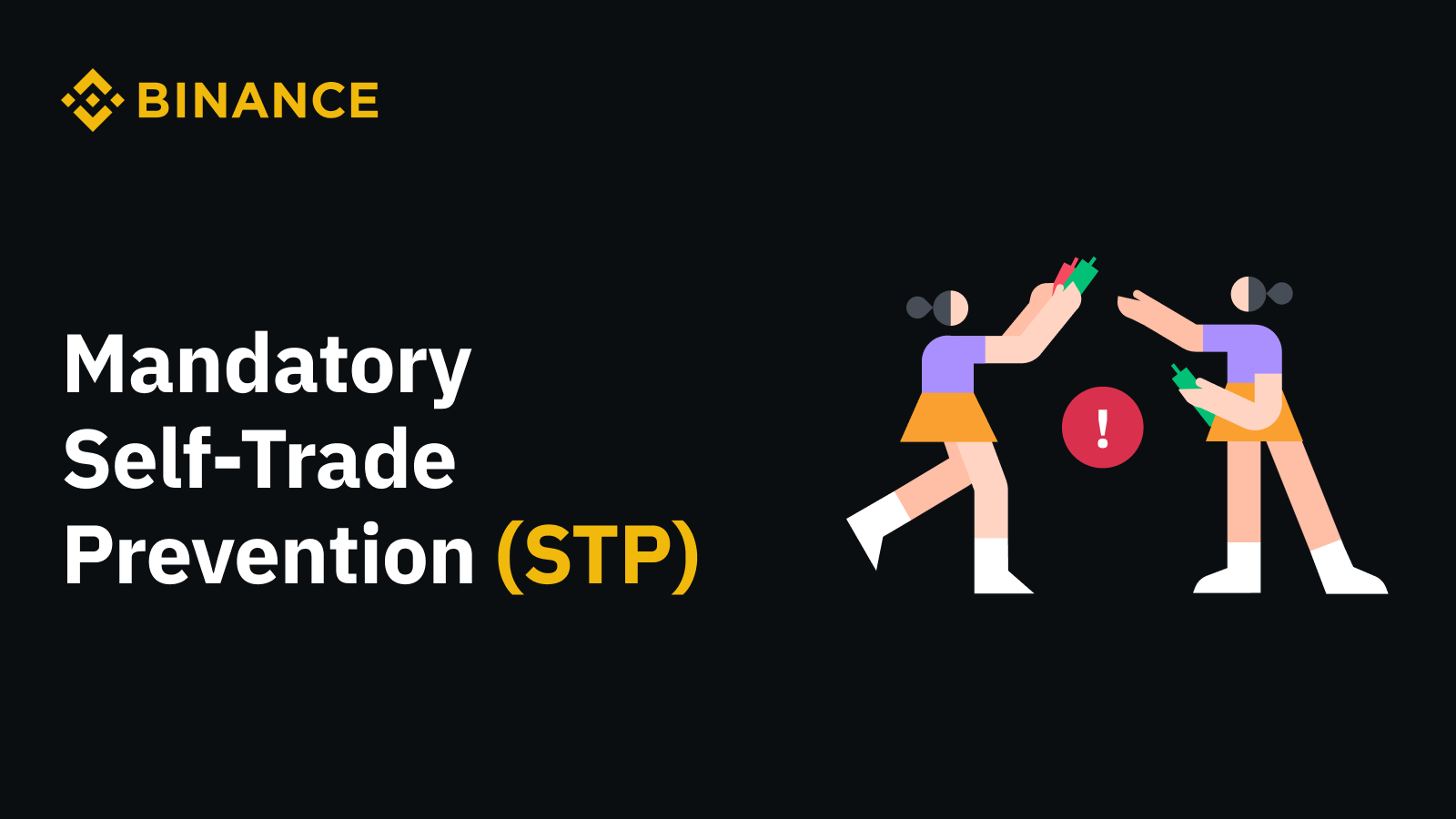Enhancing User Protection with Mandatory Self-Trade Prevention on Binance
Main takeaways:
Transition of opt-in to mandatory Self Trade Prevention.
Mandatory STP further enhances user protection and prevents unnecessary fee charges for users.
Binance, committed to ensuring the safety of our user base and creating a user-focused trading environment, have consistently prioritized innovation and user protection in the volatile landscape of cryptocurrency trading. Previously, we introduced the implementation of a Self-Trade Prevention function on an opt-in basis. Now, in a move to further elevate user protections, stay compliant, and minimize undesired fee charges, Binance is transitioning from the opt-in basis to the mandatory implementation of the self-trade prevention feature for all Binance Spot and Margin Users.
Recap on the STP Function
Self-Trade Prevention, as the name suggests, is a built-in mechanism designed to prevent users from trading with themselves—this occurrence often happens inadvertently and can result in unnecessary transaction fees for the user. Binance is the largest crypto exchange by trading volume and serves millions of users from the occasional retail trader to high volume and high frequency institutional investors – unintentional self-trading does occur and hence, a protective mechanism becomes pivotal. The function enables Binance users trading on our Spot and Margin Markets to set an STP parameter for their orders, which consequently prevents any inadvertent self-trading. Using this parameter, the user can choose whether they want the maker order, the taker order, or both orders to expire, if a self-trade would otherwise occur. The default mode is for the maker order to expire.
The Transition to Mandatory Mode
The optional execution of the self-trade prevention function had its merits. It provided users with a certain degree of flexibility, granting them the choice to perform trades under this protective measure. Traders who used the function also gave us positive feedback and confirmed the demand for it. The transition to a mandatory application carries with it greater benefits and several user advantages. It further minimizes the probability of inflated trade volume, and deters attempts of manipulative trading practices. Because self-trading often leads to artificial price fluctuations, the self-trade prevention function acts as an enhanced buffer against potential market manipulation – an essential safeguard for many users. Moreover, by avoiding self-trades, users can save on unnecessary transaction costs, increasing the overall cost efficiency of trading activities.
The shift from optional to mandatory use of the self-trade prevention feature also emphasizes Binance's commitment to creating an equitable and user-friendly trading environment. The aim is to ensure the most efficient trading practices while mitigating risk and enhancing confidence in the platform's operations.
In conclusion, the transition from an opt-in to a mandatory self-trade prevention mechanism underscores Binance's persistent efforts to provide users a seamless and secure trading experience. Such initiatives emphasize our priorities in user protection, market integrity, transparency and compliance. It signifies our continued focus on user safeguards and a step forward in consolidating user trust and reinforcing the robustness of the cryptocurrency ecosystem.
